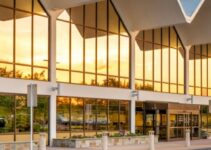🗞️ Quick Summary
-
460,000 student borrowers—about 31% of a 1.5 million backlog of Income‑Driven Repayment (IDR) applications—are being denied due to selecting the now‑blocked SAVE plan
-
SAVE, introduced under the Biden administration, capped payments at 5–10% of discretionary income but was ruled illegal in June 2024—and remains in limbo.
-
Affected borrowers are now in forbearance, not making qualifying payments toward forgiveness, and could face higher monthly bills or longer debt terms if they restart.
-
The Education Department is urging borrowers to reapply under other IDR plans and is set to introduce two new repayment plans as part of Trump’s reconciliation legislation.
The U.S. student loan system is facing its most chaotic moment in years. Nearly 460,000 borrowers just had their income-driven repayment (IDR) applications denied after selecting the now-defunct SAVE plan—a program introduced under the Biden administration that capped payments at 5–10% of income. The problem? A federal court blocked SAVE last year, and applications tied to it can no longer be processed. That means 31% of pending IDR applicants are now sitting in forbearance, not progressing toward forgiveness, and facing the return of interest accumulation in August.
The denial wave is just one part of a larger storm. A new court filing reveals that the Department of Education’s backlog of IDR and PSLF (Public Service Loan Forgiveness) applications is so massive it may not be resolved until April 2027. In other words, borrowers trying to get affordable payments—or buy back lost time toward forgiveness—could be stuck waiting nearly two more years.
For those hoping to still reach PSLF, there is a workaround. Borrowers caught in SAVE forbearance can opt to “buy back” missed months and have them count toward their 120 qualifying payments. But there’s a catch: the system processing these buy-backs is also bogged down in the same backlog, with no clear timeline for resolution. So even those willing to pay may not see progress anytime soon.
The financial consequences are steep. An estimated 7.7 million borrowers are about to have interest resume on paused loans—while still stuck in plan limbo. And for many, the forbearance clock doesn’t count toward forgiveness, meaning they’re effectively frozen in place. Even worse, those who selected SAVE likely didn’t realize their choice would disqualify them from progress and reset their path toward financial freedom.
Meanwhile, legislative change is on the horizon. Under the Trump administration’s July 2025 reconciliation bill, all existing IDR programs—SAVE, PAYE, REPAYE—will be eliminated by mid-2026. They’ll be replaced by two new repayment options: a Standard Fixed Plan and a Repayment Assistance Plan (RAP), which will offer simplified terms but fewer borrower-friendly protections. Monthly payments may increase, and forgiveness timelines will be stretched to 30 years.
The message to borrowers is clear: no help is coming soon. The systems are overloaded, the legal landscape is shifting, and interest is coming back. For many, this is the most financially vulnerable moment in their repayment journey. Borrowers are being urged to check their repayment status, switch to a legal IDR plan, consider the PSLF buy-back if eligible, and prepare for new rules in 2026.



